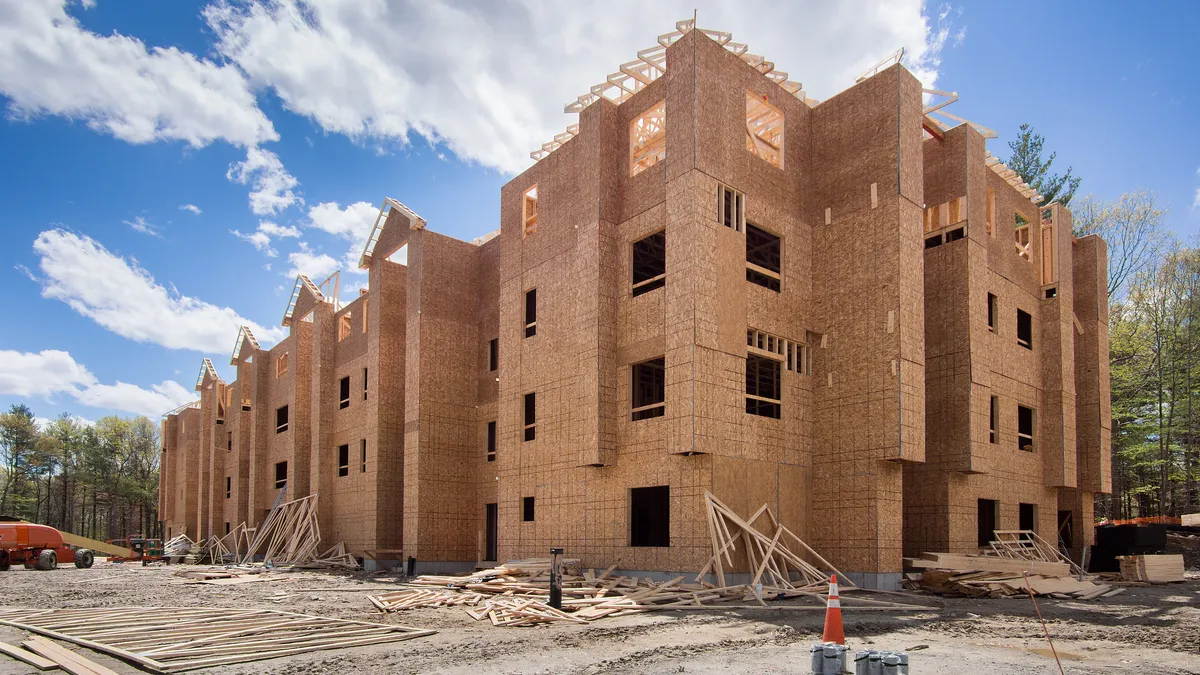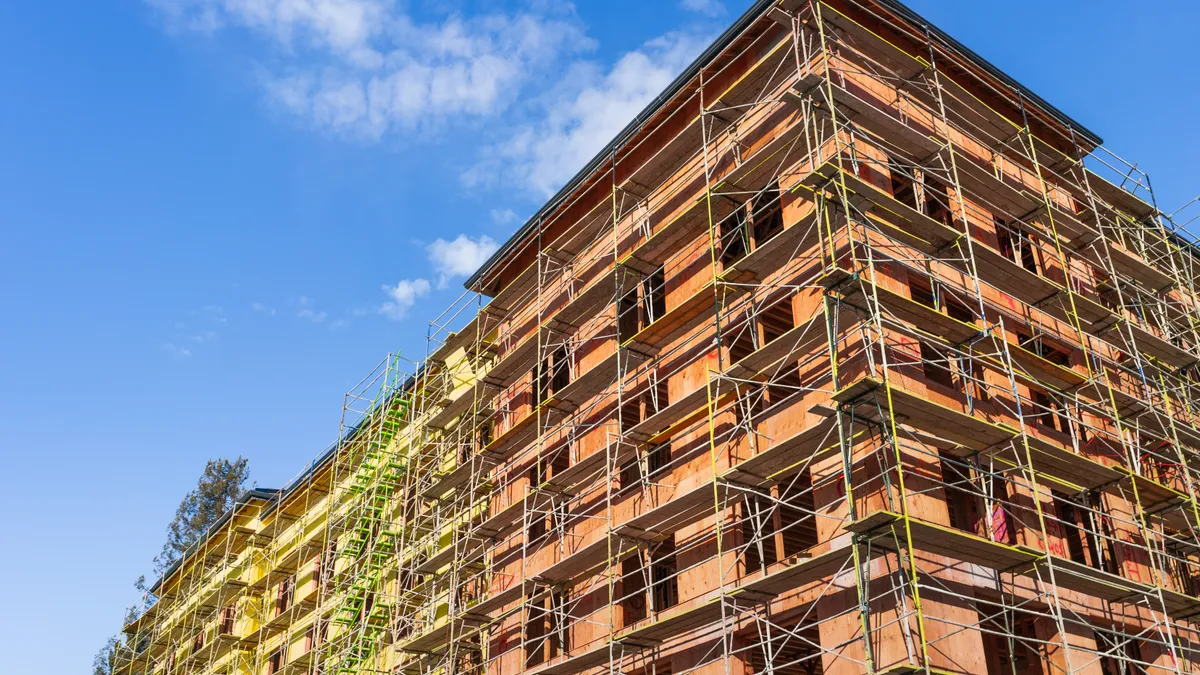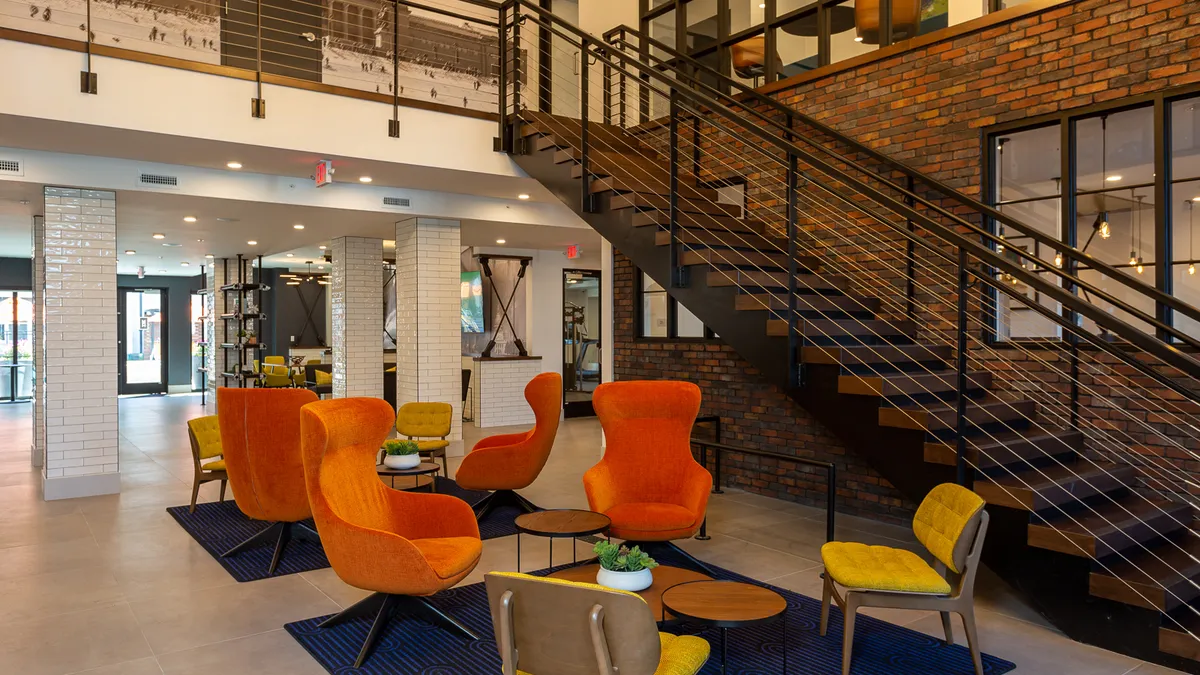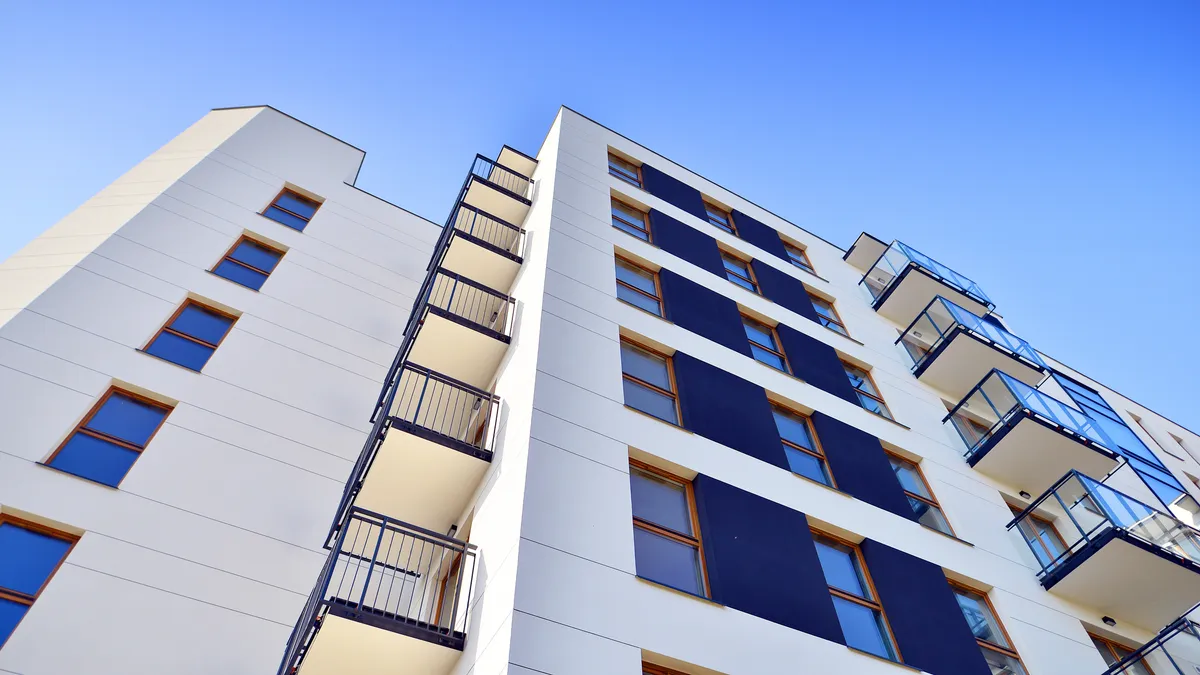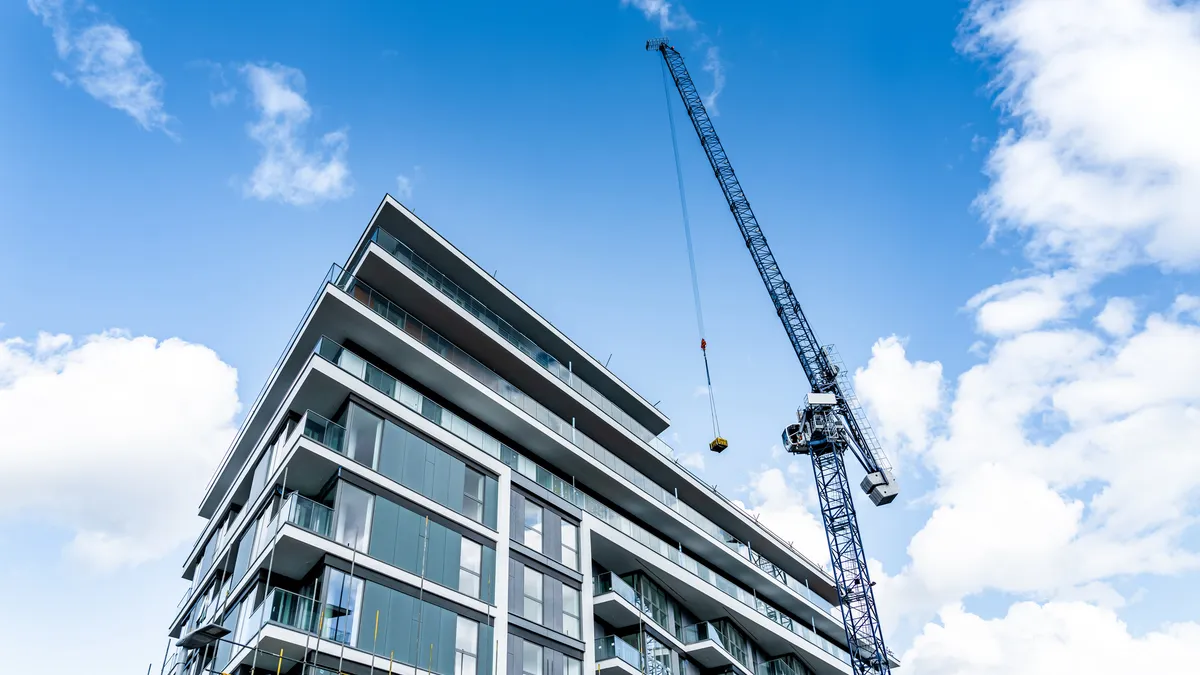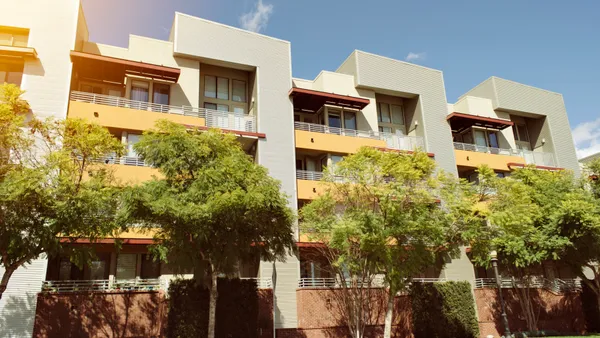The apartment industry’s strong run of growth in 2021 and 2022, when rents rose a combined 23.5%, began to stall out last year as new supply hit the market. In all, 487,512 units came online — the most since the 1980s, according to Yardi.
As those units arrived, occupancy began to slip, falling to 94.9% in October, according to Yardi. While that number is healthy by historical standards, it is 1.3 percentage points lower than the peak in 2022.
Late in the year, researchers even saw rents go backward. Apartment List reported that rent growth turned negative and Yardi said growth had fallen to 0.4% through November.
Expect more of the same in 2024. Yardi forecasts 1.5% growth, while Apartment List expects rents to move into positive territory as warmer weather approaches but not surpass the low single digits in 2024.
But national numbers don’t tell the whole story. Some asset classes and metros will fare better than others. Here are the top rent-related issues that will be front and center this year:
Supply will soar
Want one reason why rent growth will still be sluggish at best in 2024? Consider one number — 510,000. That’s the number of units Yardi forecasts will deliver this year. It's the most in decades, according to the company.
Markets with the most apartment supply in 2024
| City | Units |
| Dallas | 38,000 |
| Phoenix | 33,362 |
| Austin | 32,319 |
| New York | 26,916 |
| Denver | 22,912 |
SOURCE: RealPage
“There's so much supply coming online,” said Spencer Gray, CEO of Indianapolis-based apartment owner and operator Gray Capital. “So there's downward pressure on rents, and there's downward pressure on occupancy.”
In addition, 1.2 million apartment units are under construction, the most since the 1980s. “We're most likely going to see that supply pressure for another 18 months or so, looking at the pipeline of what is going to be delivered,” Gray said.
Concessions will rise
As new properties come online, developers are trying to stabilize them as quickly as possible. “There are costs to carry, just from the interest payments alone, not to mention the building materials and labor,” Gray said. “They’re missing their pro forma, and they need to get stabilized and be taken out to permanent financing or to sell because the longer time goes on, those returns go down and the costs go up.”
To achieve stabilization, developers are turning to concessions. Rental giveaways are rising around the country, with landlords in 43 of the top 50 markets offering more enticements to lease than last year, according to Zillow.

Some renters are starting to jump from property to property in search of the best deal, according to Jay Parsons, senior vice president and chief economist at RealPage. “It's kind of like people who change their cable providers every year, just taking the discounted rates for 12 months,” he said.
But Tom Toomey, CEO of Highlands Ranch, Colorado-based UDR, thinks concessions are only part of the issue this time around. Greater transparency in rent prices helps consumers shop for the best deals, which also drives down prices, he said on the REIT’s third-quarter earnings call.
“Our customer has more options available for them,” Toomey said. “And so they're looking at their renewal or a new move-in number and just going down the street and saying, ‘I can get more out of a new A product,’ after they lay in the concessions of one month or two months.”
Some renters will move up
Traditionally, class A rentals faced the most competition from free rent promotions. But in the second half of 2023, a different scenario emerged, according to some observers. Concessions have crept up so far on new developments that they have pulled residents out of class B properties.
In submarkets where apartment unit counts have expanded by 10% or more in the 12 months ending September 2023, effective class B rents fell 3.7%, according to RealPage. By comparison, class A rents dropped 1.5% and class C rents fell 0.8%.

“When these lease-ups are offering two- and three-month concessions, that’s bringing their rents pretty close in line with the existing market,” Parsons said.
But other observers say higher-end buildings will ultimately see the most pressure from new deliveries in 2024. “To me, it comes down to where you're playing in the sandbox,” said CoStar’s National Director of Multifamily Analytics Jay Lybik. “If you're at the top end of the market, it's going to be really, really difficult. If you're in the middle of the market, it may not be as bad and actually, we're starting to see a rebound in demand.”
Regional differences will come into play
New apartment supply should be the highest in the South and West. Markets expected to see deliveries that total more than 5% of total stock, pausing rent increases or sending them into negative territory, include:
- Austin, Texas.
- Raleigh and Charlotte, North Carolina.
- Miami.
- Nashville.
- Denver.
- Phoenix.
“In markets like Austin, in the next six to 12 months, you are going to be dealing with an issue in which the supply is going to continue to outstrip the demand,” Lybik said. “So you are going to be fighting for every single new tenant you can get, especially at the top end of the market.”
Conversely, metros in the Midwest, Northeast and smaller southern and Mountain areas should fare better, with consistent demand and muted supply growth. They include:
- Kansas City, Missouri.
- Columbus, Ohio.
- Indianapolis.
- Minneapolis.
- St. Paul, Minnesota.
Operators in coastal markets, like San Francisco, Portland, Seattle and New York City, are “feeling the impact of slower demand” and facing regulatory pressures, most notably from rent control, according to Yardi.
Customers will be choosier
But renters may also be pickier, with more options, even in markets that aren’t known for vast amounts of supply. The people who were happy to be able to lease any apartment in New York City in 2022 and early 2023 can now be choosier as they approach renewal, according to Marc Pollack, who handles the New York portfolio as managing director for multifamily at Dania Beach, Florida-based property management firm FirstService Residential.
“I think there's an element of competition where the product differentiation is coming through,” Pollack said. “And things they didn't care as much about in the residential experience when you were signing now matter more. So it's creating a bit of a pickier customer.”
Click here to sign up to receive multifamily and apartment news like this article in your inbox every weekday.



